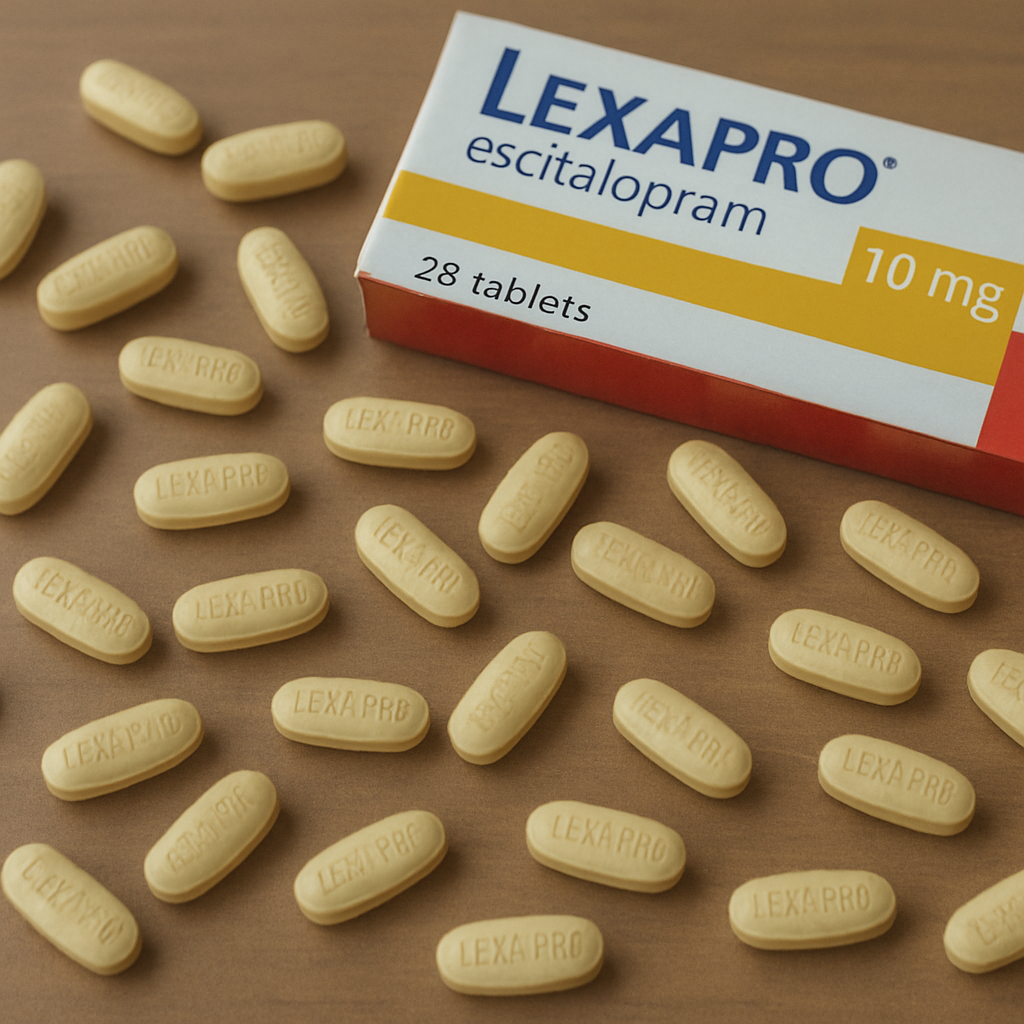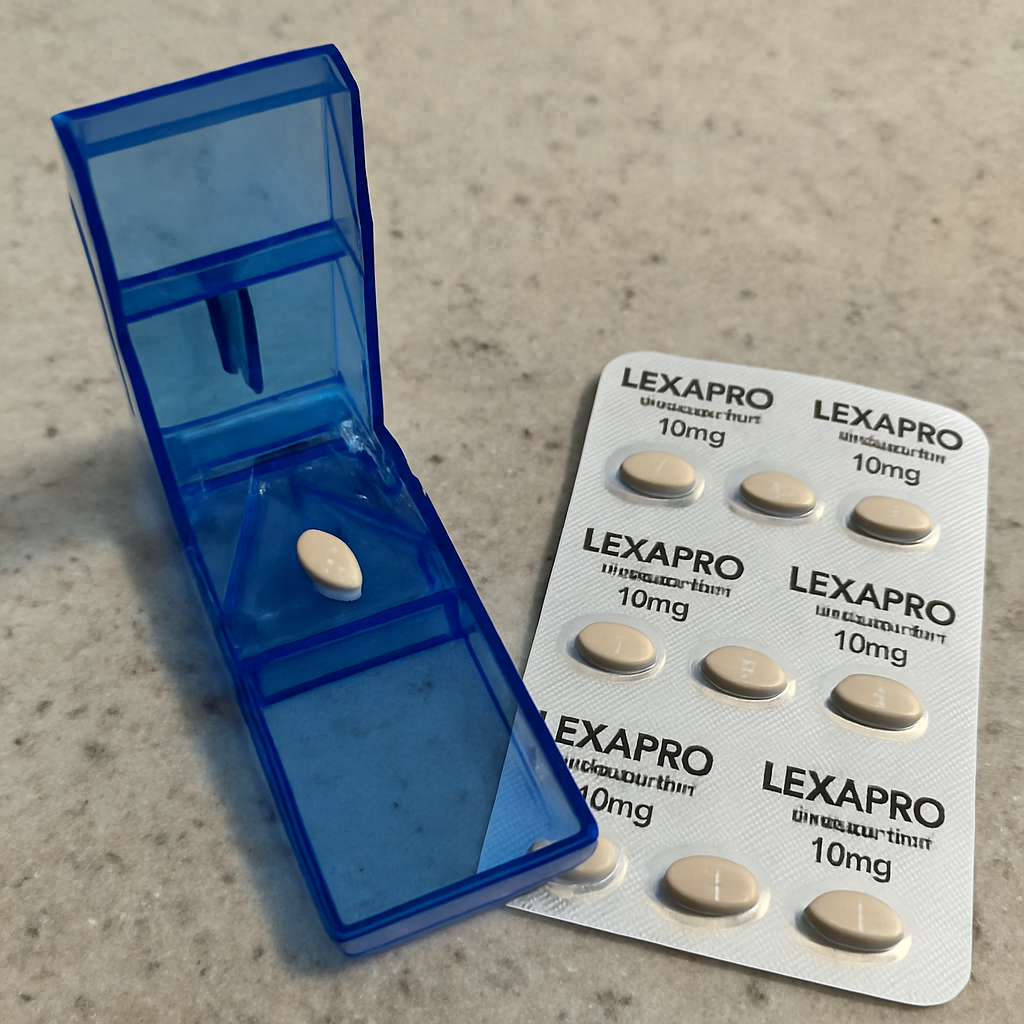
Lexapro, known generically as escitalopram, is an antidepressant that belongs to the class of SSRIs. These medications work by increasing the levels of serotonin in the brain, which can help improve mood, emotional stability, and anxiety symptoms. Lexapro is commonly prescribed for major depressive disorder and generalized anxiety disorder.
Mechanism of Action
Lexapro works by inhibiting the reuptake of serotonin, a neurotransmitter that plays a crucial role in mood regulation. By preventing the reabsorption of serotonin into neurons, Lexapro increases its availability in the synaptic space, enhancing mood and reducing anxiety. This mechanism helps in correcting the chemical imbalance that is often linked with depression and anxiety.
Clinical Applications
The primary uses of Lexapro include treating major depressive disorder and generalized anxiety disorder. However, it is also sometimes prescribed off-label for other conditions, such as obsessive-compulsive disorder (OCD) and panic disorder. Its effectiveness in these areas is due to its ability to stabilize mood and alleviate anxiety symptoms.
Patient Demographics
Lexapro is prescribed across various age groups, from teenagers to older adults. The dosage and treatment plan are tailored based on the patient’s age, overall health, and specific symptoms. Understanding the patient demographic helps in personalizing the treatment approach, ensuring maximum efficacy with minimal side effects.
The Rationale for Cutting Lexapro 10 mg in Half
You might wonder why someone would cut a 10 mg Lexapro tablet in half. There are several reasons why this might be recommended or considered by a healthcare provider.
Gradual Adjustment to Medication
When starting Lexapro, some patients may experience side effects that can be minimized by gradually increasing the dosage. By starting with a half-dose, or 5 mg, patients can allow their bodies to adjust to the medication more comfortably, reducing the risk of side effects. This stepwise approach can make the transition into medication smoother for those sensitive to SSRIs.
Customizing Dosage for Tapering Off
When it’s time to discontinue Lexapro, healthcare providers often recommend a gradual tapering process to avoid withdrawal symptoms. Cutting the 10 mg dose in half can help manage this reduction in a more controlled manner. A slow and steady tapering schedule can reduce the potential for withdrawal effects, such as dizziness, irritability, or flu-like symptoms.
Individualized Dosage for Long-term Management
Every individual’s body reacts differently to medication. Some patients may find that a lower dosage effectively manages their symptoms with fewer side effects. In such cases, taking a half-dose might be a suitable long-term solution. This personalized dosing strategy ensures that the patient receives the therapeutic benefits of Lexapro without unnecessary side effects.
Benefits of Taking a Half-Dose

Mitigating Side Effects
Taking a lower dose of Lexapro might help in minimizing common side effects associated with SSRIs, such as nausea, fatigue, and sexual dysfunction. By starting with a smaller dose, patients can adjust more comfortably and potentially experience fewer adverse effects. This reduction in side effects can significantly improve a patient’s quality of life and treatment adherence.
Enhanced Medication Adherence
Patients who experience fewer side effects are more likely to adhere to their medication regimen. This adherence is crucial for the medication’s effectiveness in treating depression and anxiety. Consistent medication intake ensures stable serotonin levels in the brain, which is essential for sustained symptom management.
Financial Advantages
For some, cutting a higher-dose tablet in half can be a cost-saving measure, especially if it means purchasing fewer tablets over time. However, this should only be done following a doctor’s advice and with confirmation that the tablet can be safely divided. This approach can make treatment more accessible for patients who may be concerned about medication costs.
Considerations and Precautions
While taking a half-dose of Lexapro can have benefits, it’s important to approach this decision carefully.
Professional Medical Guidance
Always discuss any changes to your medication regimen with your healthcare provider. They can provide guidance based on your specific health needs and monitor your progress to ensure the medication is working effectively. Regular consultations can help in making informed decisions about dosage adjustments.
Importance of Precision in Dosage
To ensure an accurate half-dose, use a pill cutter. This tool helps achieve a precise cut, which is especially important for maintaining the correct dosage. An accurate dose ensures consistent therapeutic effects and minimizes the risk of under or overdosing.
Vigilance for Adverse Effects
Even at lower doses, it’s important to be aware of potential side effects. If you experience any adverse reactions, contact your healthcare provider promptly. Monitoring your body’s response to medication adjustments is vital for maintaining both safety and efficacy.
Lexapro Side Effects to Watch For

by National Cancer Institute (https://unsplash.com/@nci)
Though Lexapro is generally well-tolerated, like any medication, it can cause side effects. Understanding these can help you recognize any issues early on.
Recognizing Common Side Effects
- Nausea: Feeling queasy or having an upset stomach is a common initial side effect. This usually subsides as the body adjusts to the medication.
- Fatigue: Some patients experience drowsiness or fatigue, particularly when they first start taking Lexapro. Adjusting the time of day you take your medication might help alleviate this.
- Insomnia: Difficulty sleeping or changes in sleep patterns can occur. Establishing a consistent sleep routine can mitigate this issue.
- Sexual Dysfunction: Reduced libido or difficulty achieving orgasm is a known side effect of SSRIs. Discussing this openly with a healthcare provider can lead to effective management strategies.
Identifying Serious Side Effects
While rare, serious side effects can occur. Seek medical attention if you experience:
- Severe Mood Changes: Watch for signs of serotonin syndrome, such as confusion, hallucinations, or severe dizziness. These symptoms require immediate medical evaluation.
- Allergic Reactions: Rash, itching, or swelling, especially of the face, tongue, or throat, can indicate a serious allergic reaction. Immediate discontinuation and medical consultation are crucial.
Real-Life Experiences with Lexapro Dosage Adjustments
Many patients have shared their experiences with adjusting Lexapro doses. While some find the standard 10 mg dose effective, others benefit from a lower dose, reporting fewer side effects and improved overall well-being.
Positive Outcomes from Half-Dosing
Patients who have successfully transitioned to a half-dose often report a smoother experience with fewer side effects, making it easier to stay on track with their treatment. These success stories highlight the importance of personalized treatment plans in achieving optimal outcomes.
Navigating Challenges with Dosage Changes
For some, adjusting to a lower dose may initially result in a slight return of symptoms. However, working closely with a healthcare provider can help manage these challenges effectively. Open communication and regular follow-ups can facilitate a successful transition to a lower dose.
Personalized Strategies for Success
Developing a tailored plan with a healthcare provider can significantly enhance the treatment experience. This includes setting realistic expectations, monitoring progress, and making adjustments as needed. Personalized strategies ensure that treatment remains effective and aligned with the patient’s lifestyle and needs.
Conclusion
Deciding to cut a 10 mg Lexapro tablet in half should always be done under the guidance of a healthcare provider. While there are benefits such as reduced side effects and better adherence, it’s crucial to approach this decision with care. By collaborating with your doctor, you can find the dosage that best suits your needs, helping you manage your mental health effectively.
Remember, everyone’s experience with medication is unique, and what works for one person may not work for another. Stay informed, communicate with your healthcare provider, and prioritize your well-being as you navigate your treatment journey. By understanding the nuances of medication management, you can play an active role in your health care, ensuring the best possible outcomes.


